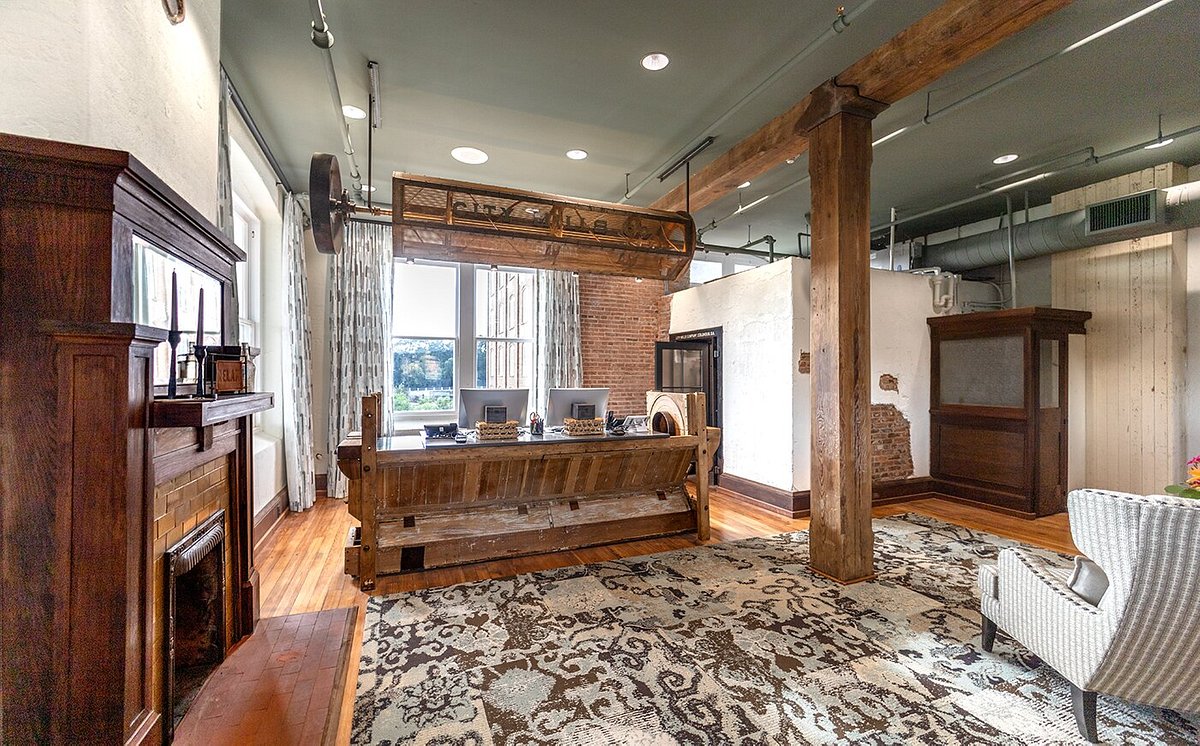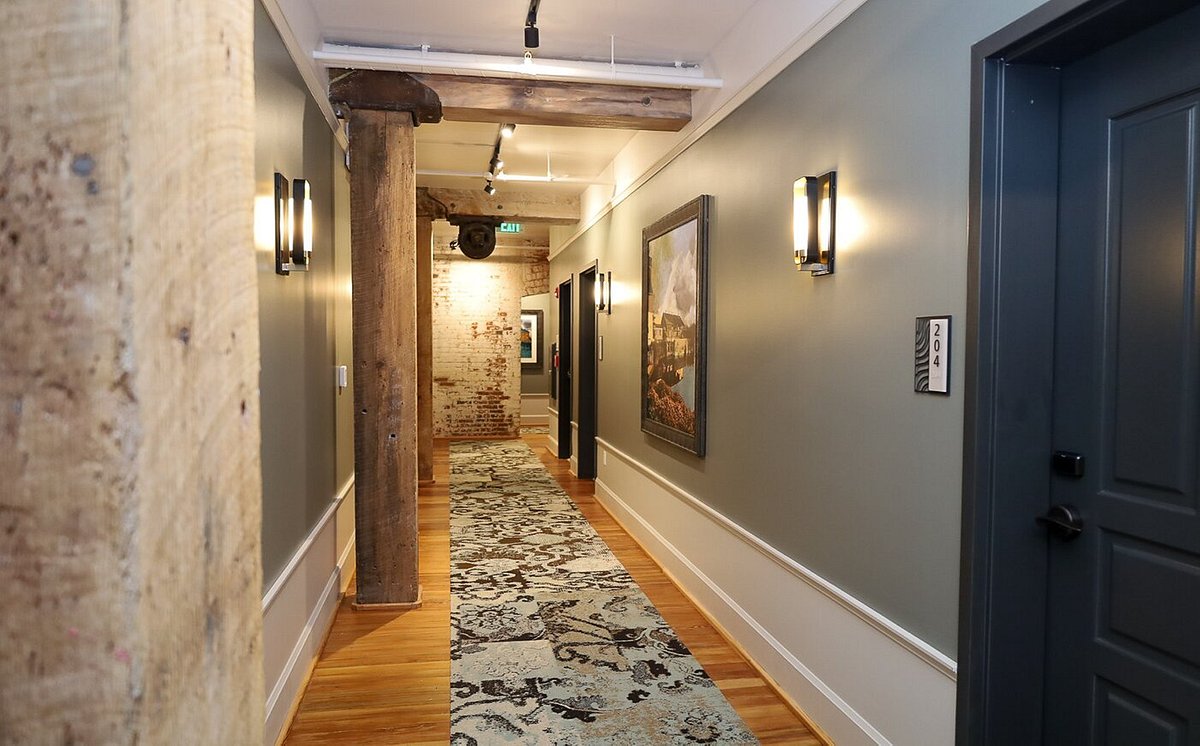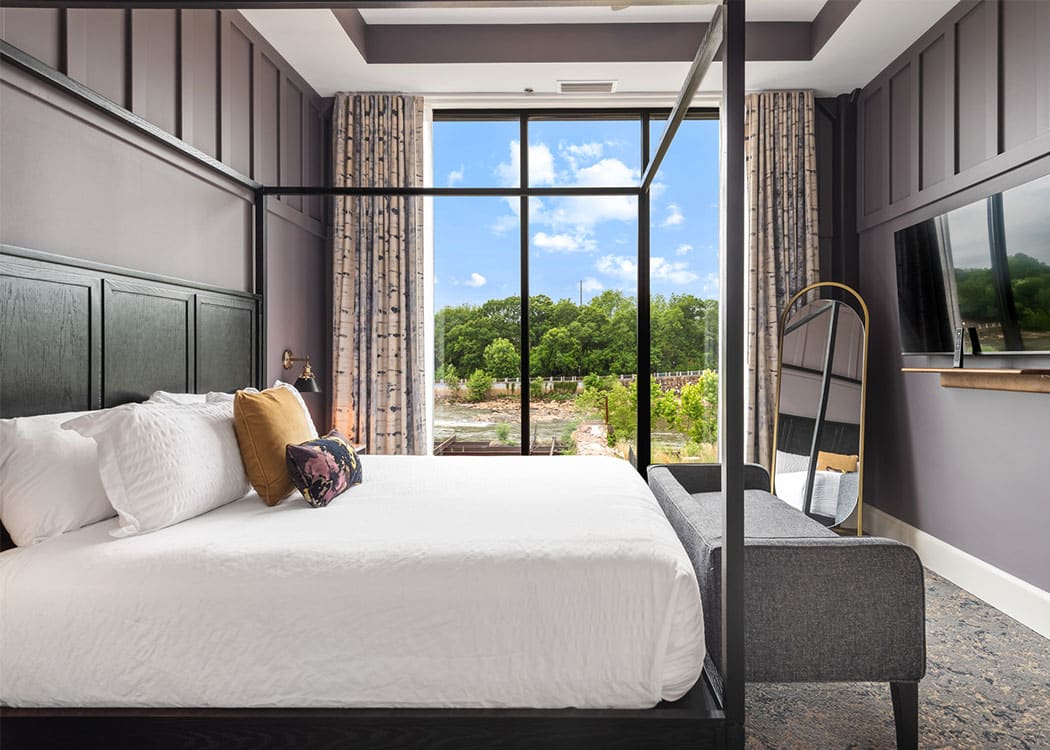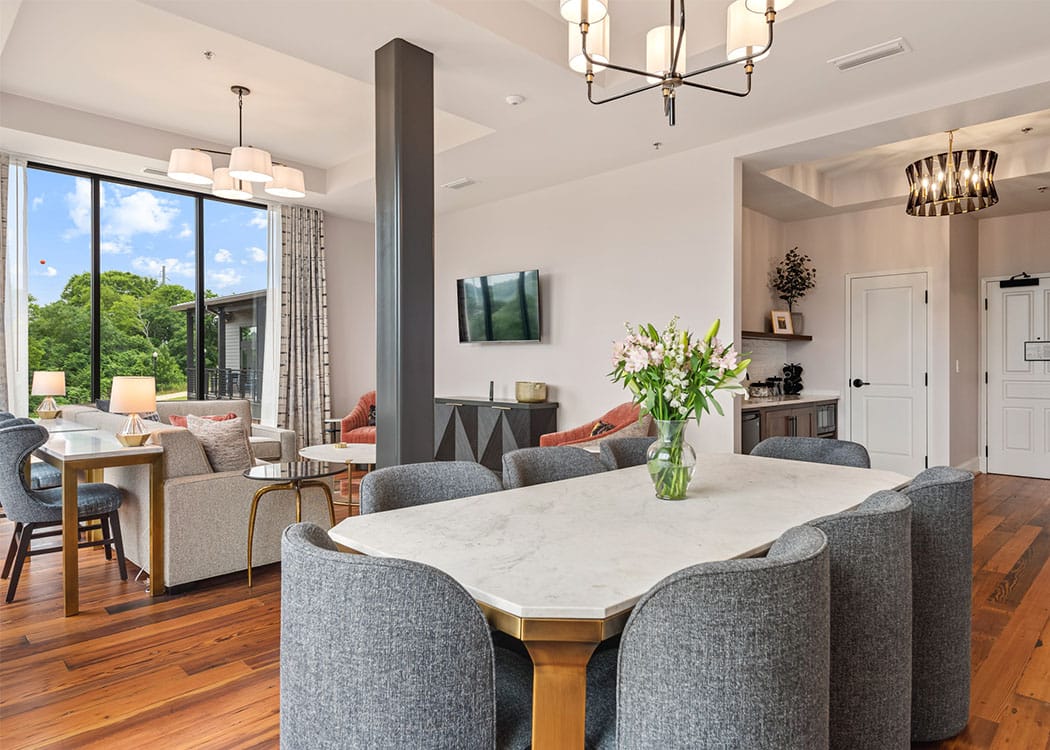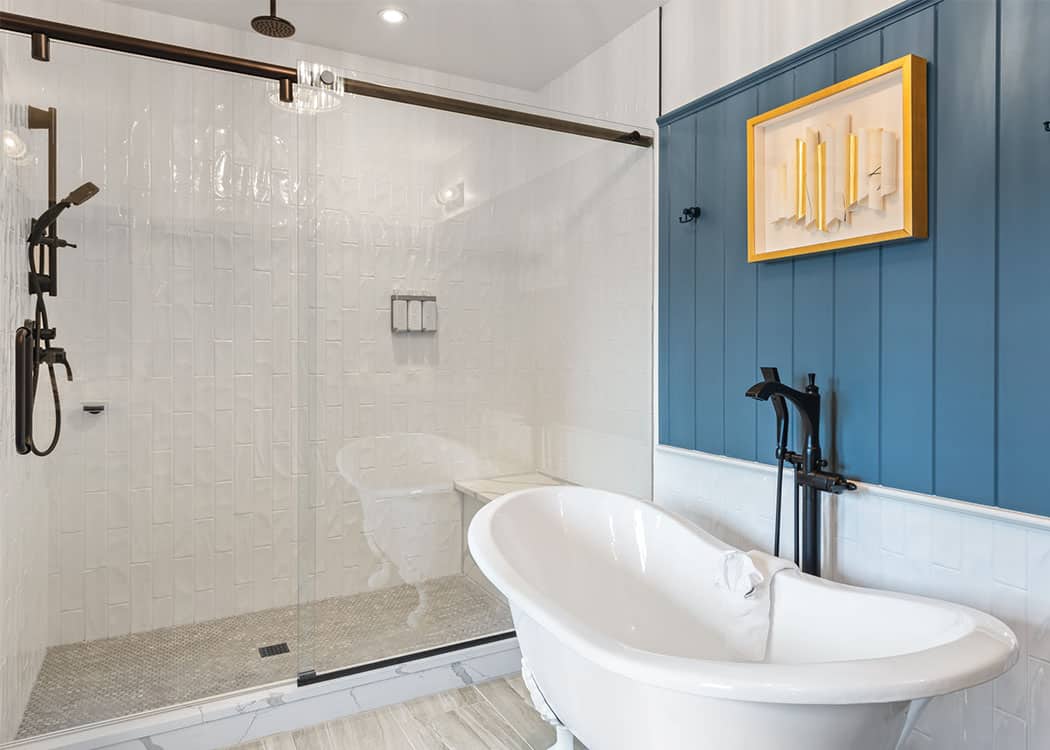City Mills Hotel Columbus, GA
The City Mills Company was founded in 1890 with the construction of two mill buildings in along the Columbus River in south west Georgia. Right on the banks of the river, what is now known as The River Building, produced flour with the power of the flowing Columbus River. In the restaurant on the ground floor, patrons will suspend above the original water wheels that gave life to the mill over a century ago. Across the from the historic flour mill is a second mill where 2,500 bushels of cornmeal were produced each day.
Armed with ample inspiration from the unique positioning of the buildings on the river, the history of the corn and flour mill industry, and an abundance of artifacts on site, the design team set out to layer these elements into an industrial yet sophisticated and warm design. The base of the desk lamp is modeled after the bevel gear of the hursting frames found throughout the mill and a historic photo of the gears is on display in the rooms. When an original door was discovered on site, the team used the panel design of three vertical panels atop three horizontal panels as the design for the guestroom entry doors. Fabrics reminiscent of grain sacks are thoughtfully placed; carpet patterns pick up the cross beams of the power station still standing alongside the Flour Mill; the curve of the desk chair arms emulate the exposed steel column bracing found throughout the building. From the obvious to the subtle, the design team captures the essence of the mill’s history.
The best-laid plans of mice and men often go awry. The design team jokes Robert Burns was in the midst of a Historic Adaptive Re-Use project when he penned this now famous line. Embracing this is crucial to both the success of this type of project (and the sanity of the design team) throughout the construction process. With several of these projects under their belts, the design team knows to plan for in-field variances. This means to allow for even more wiggle room in their layouts and design than a typical project. For City Mills, the casegoods are designed in various components that can be broken into separate units or reversed if field conditions differ than what was planned. The ceiling fans have multiple ways for installation to allow for coordination in field with varying ceiling heights, exposed pipes, and those dreaded sprinkler heads. While the team started with a budget friendly broadloom carpet in the guestrooms, after working with the manufacturer to determine the best layout and roll width, they determined carpet tile would provide the best yield for the project as the rooms vary considerable in width and shape creating significant waste with broadloom.


